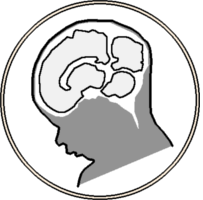Jia, Yuanyuan, Ali Gholipour, Zhongshi He, and Simon Warfield. 2017. “A New Sparse Representation Framework for Reconstruction of an Isotropic High Spatial Resolution MR Volume From Orthogonal Anisotropic Resolution Scans”. IEEE Trans Med Imaging 36 (5): 1182-93.
Abstract
In magnetic resonance (MR), hardware limitations, scan time constraints, and patient movement often result in the acquisition of anisotropic 3-D MR images with limited spatial resolution in the out-of-plane views. Our goal is to construct an isotropic high-resolution (HR) 3-D MR image through upsampling and fusion of orthogonal anisotropic input scans. We propose a multiframe super-resolution (SR) reconstruction technique based on sparse representation of MR images. Our proposed algorithm exploits the correspondence between the HR slices and the low-resolution (LR) sections of the orthogonal input scans as well as the self-similarity of each input scan to train pairs of overcomplete dictionaries that are used in a sparse-land local model to upsample the input scans. The upsampled images are then combined using wavelet fusion and error backprojection to reconstruct an image. Features are learned from the data and no extra training set is needed. Qualitative and quantitative analyses were conducted to evaluate the proposed algorithm using simulated and clinical MR scans. Experimental results show that the proposed algorithm achieves promising results in terms of peak signal-to-noise ratio, structural similarity image index, intensity profiles, and visualization of small structures obscured in the LR imaging process due to partial volume effects. Our novel SR algorithm outperforms the nonlocal means (NLM) method using self-similarity, NLM method using self-similarity and image prior, self-training dictionary learning-based SR method, averaging of upsampled scans, and the wavelet fusion method. Our SR algorithm can reduce through-plane partial volume artifact by combining multiple orthogonal MR scans, and thus can potentially improve medical image analysis, research, and clinical diagnosis.
Last updated on 02/27/2023
